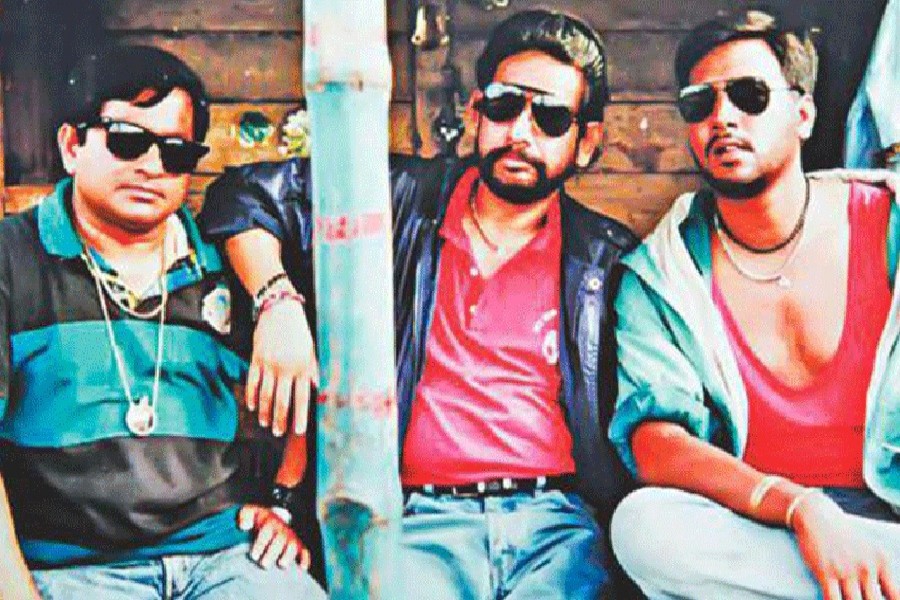Do many of today’s generation know Humayun Ahmed received hundreds of requests including one from the then prime minister of Bangladesh for not executing Baker Bhai in 1993? Probably not.
A number of fans of Baker Bhai, the lead fictional character in Kothao Keo Nei, one of the most popular drama serials written by Humayun Ahmed, gathered in front of the writer's home to request him.
Fans went even so far as to take out demonstrations at many places across the country to demand that Baker Bhai, the loveable goon, not be executed in the drama serial.
Baker Bhai, portrayed by Asaduzzaman Noor, however, could not be saved — He was hanged at the final episode of the popular drama serial.
For years afterwards, there was a sad feeling among people due to the execution of Baker Bhai.
While listening to the yesteryear Bollywood number ‘Hawa mein udta jaye, mora laal dopatta malmal ka’, people can still now relate themselves to Baker Bhai’s favourite song.
Then comes the question why Baker Bhai became popular and touched the hearts of people so intensely.
Not only the making, the script, or the dramatisation of the characters, there were also many reasons behind the drama's popularity.
Poet and translator Dr Mohammad Shafiqul Islam, an associate professor of English at Shahjalal University of Science and Technology (SUST), said, "For various reasons, the cultural representation of Bangladesh in the 1990s was distinctive. Life was then more peaceful and less complex."
He said Humayun Ahmed’s TV serials will remain "unmatched for decades", recalling that people used to eagerly wait for watching his serials such as ‘Kothao Keu Nei’, ‘Bohubrihi’, ‘Ayomoy’, and ‘Aaj Robibar’.
“Many dramas and other programmes also received similar kind of popularity. No one can forget that people took to the streets protesting against the death sentence of [a fictional character] Baker Bhai,” he added.
During the 1990s, BTV was the only television channel to entertain the whole country. Internet and gadgets were unavailable and so people used to look forward to the BTV programmes.
All members of a family used to sit together in front of the television. They used to enjoy the programmes together, forgetting their generation gap.
Nowadays, the youths crave more privacy than that time. They do not prefer watching a particular type of TV programme.
To watch a TV programme privately and to not watch them monotonously, they have so many options like smartphones and the internet where too many movies, serials, series, drams, short films are available.
All these things have led to them being alienated and drawing room culture of watching television with families becoming almost out of practice.
The reason behind the craziness for Baker Bhai was not only the quality of the drama or the portrayal of characters by the artistes — it would also provide an occasion when all the members of a family could sit together and spend quality time in front of the television. That was how Baker Bhai had climbed to the apex of public attention.
Sajib Sakhawat, a student of physics at SUST, said, “The reason the 1990s dramas became so popular is the lack of options for recreation."
In today's world, there are many options and so whenever an episode of a TV programme seems average to a person, he or she can easily switch over to another, he said.
When it comes to the quality, a television programme like drama in Bangladesh has to compete with others not only at the national level but also at the international level, the SUST student added.
If YouTube views are considered, it can be said the new generation of viewers has also shown their love for the plays of the 1990s.
While OTT (Over the top) platforms like Netflix, Amazon Prime are randomly providing all the great series one after another, and their popularity is being promoted through social media memes, we can find memes of ‘Aaj Robbibar’ too.
Even today in many dining rooms, the characters of the TV serials of the 1990s often become the occasion of laughter for three generations.
This author is currently studying English Literature at Shahjalal University of Science and Technology. She can be reached at [email protected].


